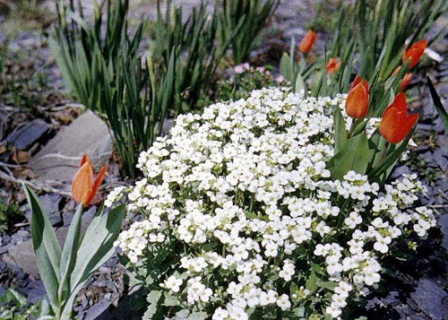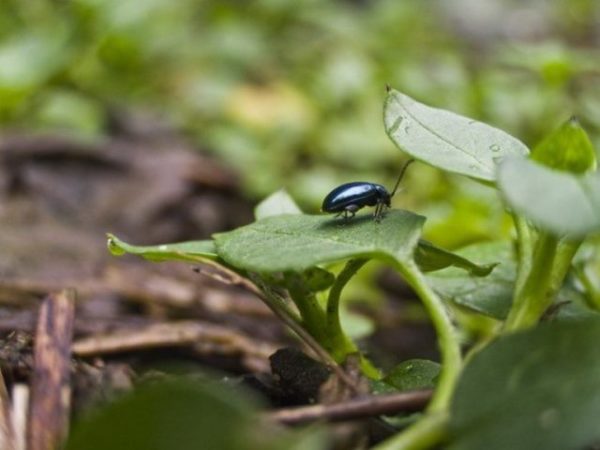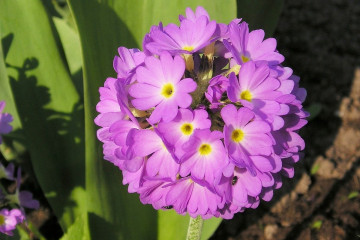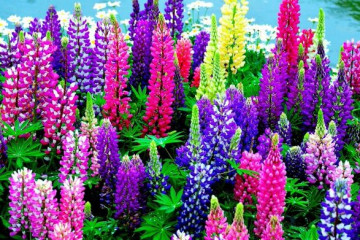Arabis perennial - how to grow and care
Content:
Many people consider spring the best time of the year - foliage appears on the trees, the length of the day increases, and it gets warmer outside. Perennial Arabis, or rezuha, refers to flowers with an early flowering period. Its curly stems, strewn with bright flowers, look like streams. Flowers bloom in April-May.
One look at this plant is enough to forget about cloudy days, gray everyday life, stone jungle. Arabis Alpine - these are white buds, small, delicate. Runaway inflorescences are tall, foliage in white stripes. Grandiflora will surprise you with pink, lilac blooms. As if rhinestones were scattered on the green carpet. They will soon disappear, and it will become normal again. The Caucasian petals are darker. Bryous and Brown look great against the background of stones. The pattern of the branches is similar to graffiti, maze, mosaic. Like snowdrops, this flower can play the part of the main violin in spring in a flower orchestra, but it is filled with exoticism, endowed with other magic.
Arabis perennial: planting and soil selection
Experts recommend that you definitely plant a Arabis flower, at least one of the varieties, if there is an apiary nearby. There are many melliferous plants, and the more there are, the tastier the honey. Astringent notes will complement the bouquet without disturbing the harmony. The plant comes from rocky terrain, mountains of Europe, Asia. Loves well-lit areas of the yard.
The advantage that makes it possible to claim the status of the best plant for landscape compositions, apiaries, verandas is unpretentiousness. Any type of soil is suitable, however, you need to create a good drainage layer. The plant practically does not require the attention of a grower, but, having felt care, it will thank it with lush flowering.
Hydroponics is also relevant in this case. The advantage is a high level of availability of the necessary minerals, good air exchange, economical use of water, fertilizers, significant aesthetic potential.
What time to plant
The seeds are sown in the flowerbed in September, and in the spring they are waiting for shoots. Another year will pass and only then will the rezuha bloom. A little greenery in the spring against the background of dull stones and earth is a pleasant sight. Arabis gold, white, pink for the second season will delight the owners with delicate shades of buds.
Perennial Arabis: how to plant with the right technology
If this flower is chosen for cultivation - perennial Arabis, planting work in the flowerbed must begin with it. After removing last year's foliage, digging, forming drainage, the area should be sown.
Landing rules:
- seeds are thrown into holes with a depth of 3 to 5 mm at a distance of 40 cm;
- flower "carpet" is guaranteed to be thick if you put 2-3 seeds in each at the same time.
Proper watering
In the open field near the house, flowers usually have to be watered on weekends.They are always there and it is not a problem to provide them with water. Rains, shade, melt water make up for the lack of moisture in the open air. Regular, systematic watering will make the Arabis feel well-groomed. So attention to this procedure just needs to be paid every seven days, not more often.
Reproduction methods
From seeds, the plant is germinated directly in the open field and through seedlings.
Arabis Alpine: growing from seeds
A mini greenhouse is the best conditions created specifically to increase germination rates. The planting container is filled with black soil mixed with sand, the seeds are placed, and covered with a film. In the room in which it will stand, you need to maintain an air temperature of +20.
After the appearance of the second leaf, the seedlings should be taken out to the balcony or a window should be opened if the planting container is on the windowsill. This should be done for 20-30 minutes every day, gradually increasing the time interval. A week before transplanting, mineral fertilizers are applied to strengthen the plant's immunity. Flowers are transplanted after the appearance of the third true leaf.
In this case, all the bushes will take root on the flower bed, they will not freeze, the new microclimate will not adversely affect them. This also applies to arabis caucasica and arabis bryoides, as well as other species.
Cultivars with double buds do not produce seeds, therefore the cuttings method is used. Cut branches for rooting when the mother plant has bloomed. Germinate by placing in a container with soil. You need to choose those whose length is at least 10 cm.
In addition to the seed method and cuttings, the layering method is often used:
- you will need a transparent plastic container, 5-7 cm deep;
- in its walls, you need to make two holes opposite each other;
- fill the earth with the bottom;
- put the container on one of the branches of an adult flower;
- put it on the ground gently, press it with a stone or something else.
After a couple of weeks, roots will appear in the part that turned out to be in the container with the earth. You should choose branches with woody bark, brown color, the middle part of the shoot.
The division method is also used. Plants that are at least 3 years old are suitable. They are dug up, carefully cut in half and seated. It is advisable to sprinkle the cut site with ash or activated carbon. It is also necessary to hide them from direct sunlight for 2-3 days by building a small canopy of boards, rods and fabric - any materials at hand.
Top dressing and transplanting
Standard mineral fertilizers for ground cover are what the Arabis flower needs. They are brought in in spring and autumn. Humus can also be used to feed pink, white or lilac arabis with green and variegated foliage.
Arabis pruning
In one season, mountain bindweed can occupy half of the flower bed. It will easily displace neighboring flowers, the symmetry of the composition will be broken. To prevent this from happening, once a month it is advisable to inspect the territory, remove the layers released by him.
Pests and diseases
Many pests consider this plant unsafe for themselves, which makes it easier to care for it. Only the cruciferous flea runs the risk of feasting on them. The larvae hibernate in the ground. In the fall, fallen leaves must be removed from the site, and the ground must be dug around.
To combat adults, traps are used - plywood sheets with applied glue. A popular folk eco-method is spraying with ash infusion. By planting marigolds, garlic, dill, calendula nearby, you can scare away insects.The most effective treatment is with insecticides - concentrates of toxic synthetic and natural chemicals specially created in laboratories.
Even a few beetles on the arabis foliage of Ferdinand or Alpine are dangerous. At the first signs of the disease, action should be taken.
Flowering period and care after
Experts recommend cutting off all inflorescences after flowering is complete, rather than waiting for them to naturally fall off. The Arabis bush of white, pink, lilac will look aesthetically pleasing even without inflorescences.
How to prepare for wintering
The Alpine and run-out rezuha have different levels of frost resistance, but even in regions with a warm climate, a record temperature drop is possible. An unusually cold winter will ruin the flower garden. A rare natural phenomenon makes you insure yourself, cut off the aerial part, leaving 3-4 cm. This way you can protect the plant from unnecessary waste of vitality, stress and unforeseen cold weather. You need to cover the bushes after that with plastic wrap or pre-prepared hay, spruce branches.
Use in landscape design
This flower looks like an exquisite hat.
One variety has a well-developed root system. With its help, you can strengthen the hill, embankment, shore of the reservoir. In particular, Caucasian rezuha has a strong root. Another variety has more beautiful foliage than flowers, which makes it indispensable when choosing a lawn design. For example, the Arabis Variegat has oval leaf plates of a deep blue-green color with a white rim. The variegated flower is small in size. The height of the bush reaches 15 cm. It will look great against the background of lawn grass.
Arabis by Ferdinand of Coburg has similar foliage, but the height of the bushes reaches only 5-6 cm. That is, you can decorate the lawn with it, but you will have to trim it more often. There are varieties with purple petals, white, cream. The buds can be double or simple. If you plant it around the gazebo, it will look like an aircraft that has landed on a flower pillow in the garden.
The Sun Bunny Arabis has a yellow core, which makes it look like a miniature, very strange chamomile. The Alpine snow carpet will bring sophistication to the composition, and the Sun Bunny - enchanting.
The main areas of application of the flower:
- addition of Rockaria composition;
- creation of the Alpine slide;
- decoration and strengthening of hills, embankments;
- decorating the shore of an artificial reservoir;
- the formation of a multi-tiered hedge, border;
- on the flower plateaus.
Arabis Caucasian Little Treasure Deep Rose, and other varieties of this unique plant can be grown on the windowsill and used to create eco-panels. A vertical garden in the bedroom, living room, in the kitchen of these flowers will inspire and help restore harmony in the soul after a busy day, will return optimism, confidence and hope.






















